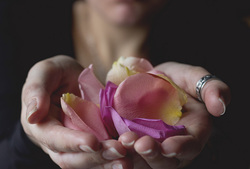| I attended a prisoners’ rights meeting in Buffalo and was one of two white people in attendance. The group discussed The New Jim Crow, the profiteering of the prison industrial complex, and the concerns of families affected by incarceration. The other white woman, a self-proclaimed activist, shared her opinion frequently, and at one point – as we discussed the racial disparities of mass incarceration – she blurted (and not sarcastically), “Do you think it has to do with racism?” The room drew a quick breath, as if to refrain from incredulous laughter or avoid a barrage of no-sh*t-Shirlock and welcome-to-the-conversation. The moderator let out a curt Yes, but then took a moment to patiently teach her. I admire that he didn’t wave her off. How many times do black people have to explain their experiences before white people “believe” racism still exists? It is currently being expressed through the largest incarceration system in the entire world – that of the United States. Did you know that currently the United States imprisons a larger percentage of its black population than South Africa did at the height of apartheid? (Michelle Alexander, The New Jim Crow). That should tell you something. Currently, 1 in 3 black males will be under some form of correctional control in their lifetime. | Consider these statistics on racial disparity from the NAACP: |
Now consider that over 95% of elected prosecutors are white, and according to the American Bar Association, so are 88% of lawyers. How does this influence sentencing outcomes? Well, I don’t think I can say it as eloquently as this piece of research from The Sentencing Project (2005).
No matter what race, we need to acknowledge the racial disparities of mass incarceration and stand up to the issues behind it; otherwise, we are complicit in systemic racism.


 RSS Feed
RSS Feed